This post may contain affiliate links. If you make a purchase through an affiliate link, I will earn a commission at no extra cost to you. Thanks for your support.
Our first stop in the Coffee region of Colombia was stunning Salento. Salento is a small town surrounded by verdant mountains and coffee farms and is a popular stop on any Colombia backpacking route.
We stayed at a lovely hostel on the outskirts of town that is also attached to a working coffee farm owned by an eccentric elderly English/Australian gentleman. As we stayed 3 nights at the hostel we got a tour of the coffee farm for a steal, only COP5000 (USD$2.75)!

We walked from the hostel down to the coffee-producing part of the farm which has an amazing location, set above a lush valley. We had a run-through of all of the stages of coffee production from picking the berries to roasting the beans. They even roasted and ground some beans in front of us then made coffee for us to try.
Afterwards, we were free to wander amongst the giant bamboo groves and pineapple plants (if you haven’t seen pineapples growing, put it on your to-do list; they are the cutest things ever!).
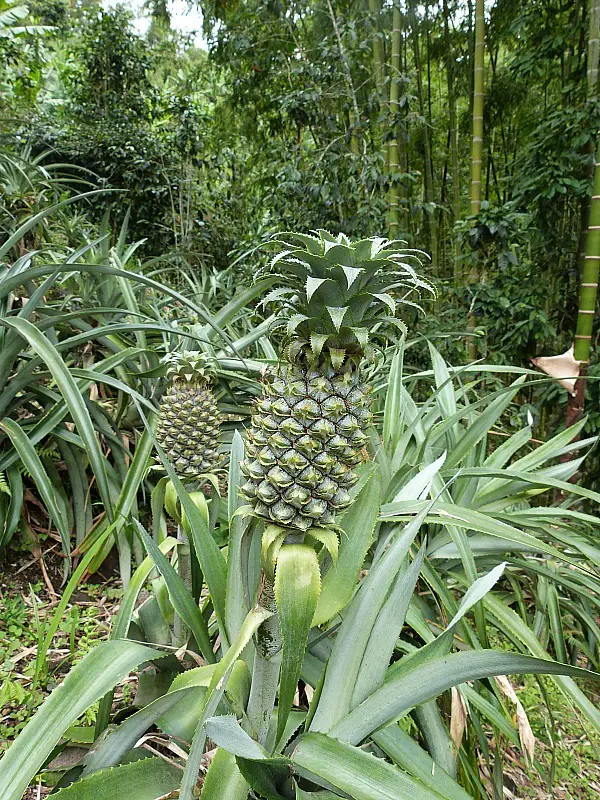
On our second day, we got a jeep into the Valle de Cocora for some hiking. I can see why it is rated the best day hike in Colombia, it is too picturesque for words but I will try.
The first part of the hike we were following a river through the valley, surrounded by mountains. We were guided by a gorgeous local Labrador who would patiently wait for us when we lagged behind.
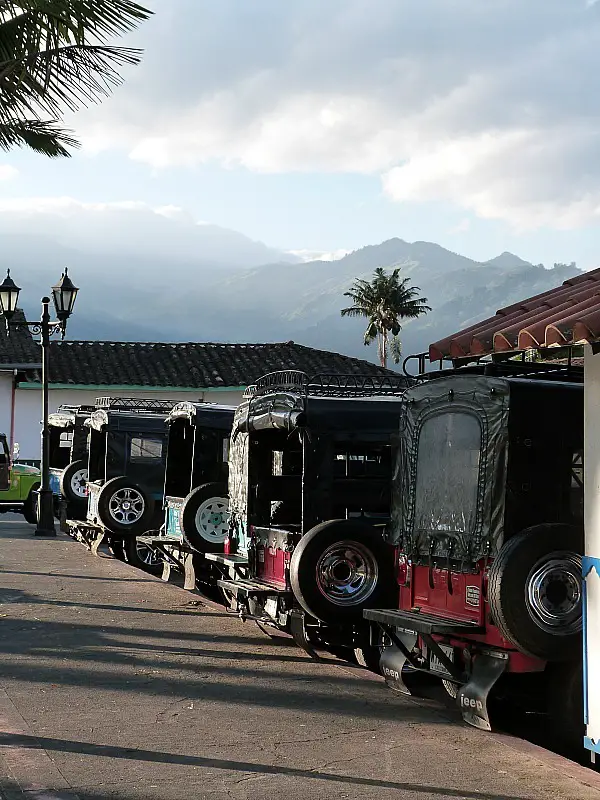
The trail enters the forest and ends in a reserve where you are rewarded with a hot drink and time to relax to watch the numerous hummingbirds at the feeders.
After a rest, we hiked up La Montana, a steep but short trail up a mountain with fantastic valley views from the top. Cloud was swirling around the mountain tops like it was being blown in all directions.
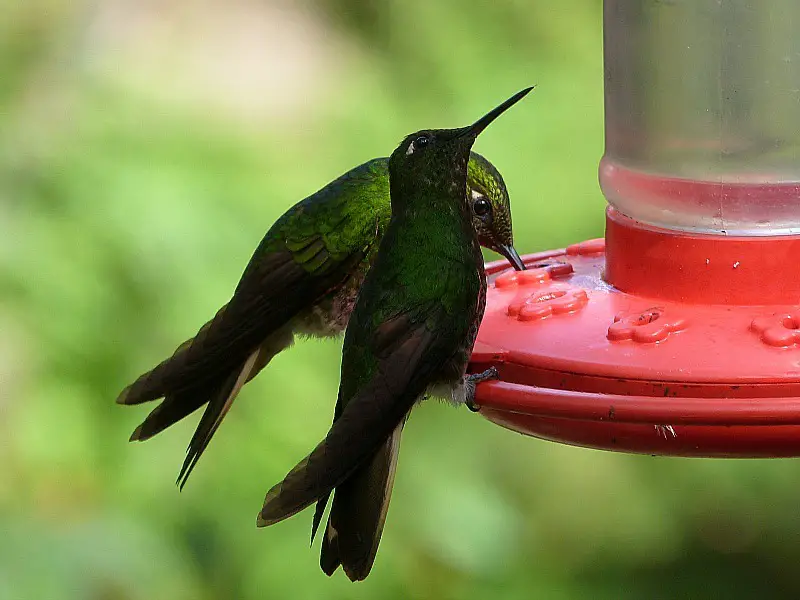
On the descent down the other side of the mountain, the trail leads beneath giant wax palms, some were 60 metres tall, and the landscape made us feel very small!
I can definitely say the hike was one of the most impressive I have done on this trip, and I highly recommend it.
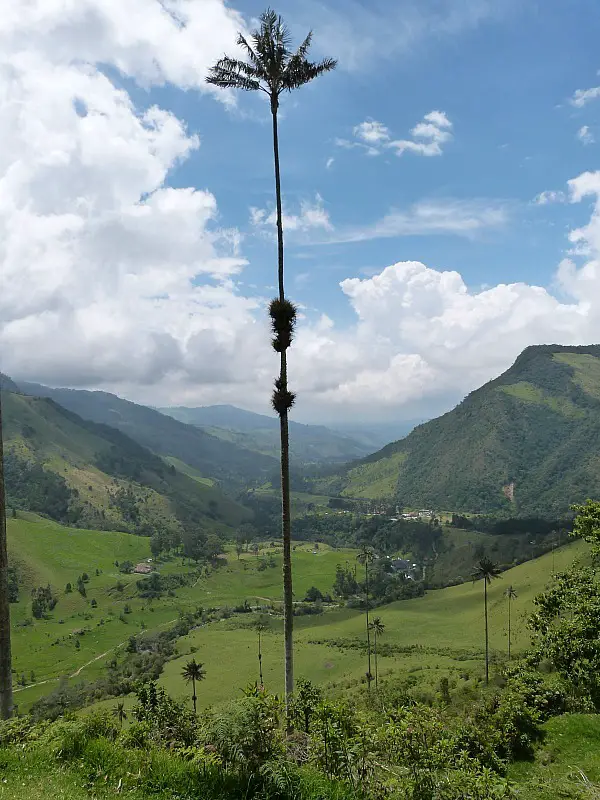
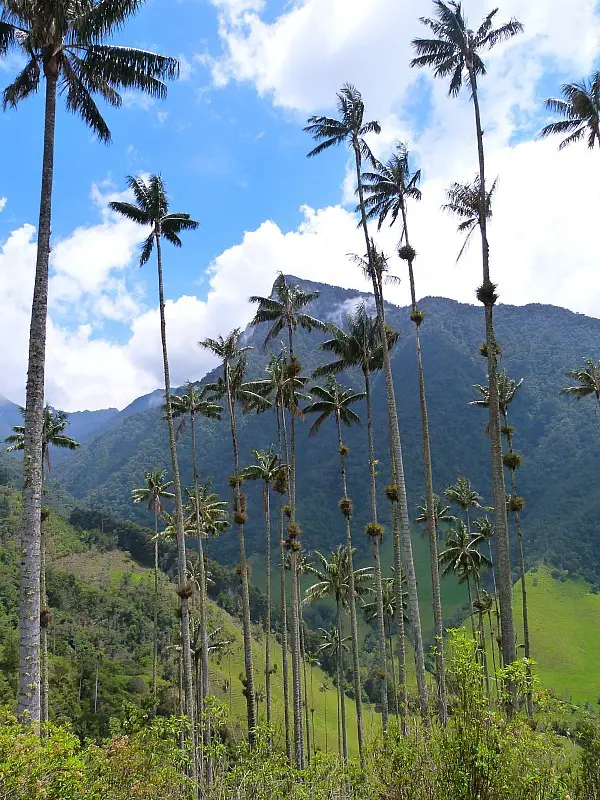

Salento turned out to be my favorite place in Colombia (well, maybe equal to Minca) and I was hesitant to leave, but we didn’t want to miss out on visiting some more great places so we bused on to Popayan.
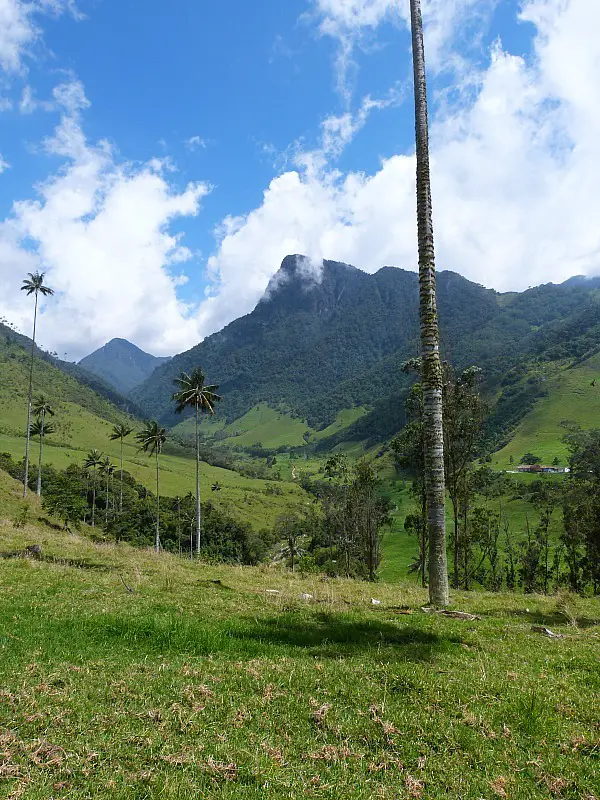
Popayan is known as the White City because the historic City Centre is full of beautiful white-washed buildings, surrounding a green square.
The thing I enjoyed most about Popayan was the food: Fantastic and cheap street food including BBQ’d corn on the cob, grilled chicken sticks and amazing Arepas with different sauces with crushed potato chips on top, and cheese in the middle.
There was also a fantastic café that did delicious flavoured lattes and a Bakery that had amazing glazed donut holes and tiny custard-filled choux pastries. After all the eating, we decided to get in some exercise and hired bikes for a day.

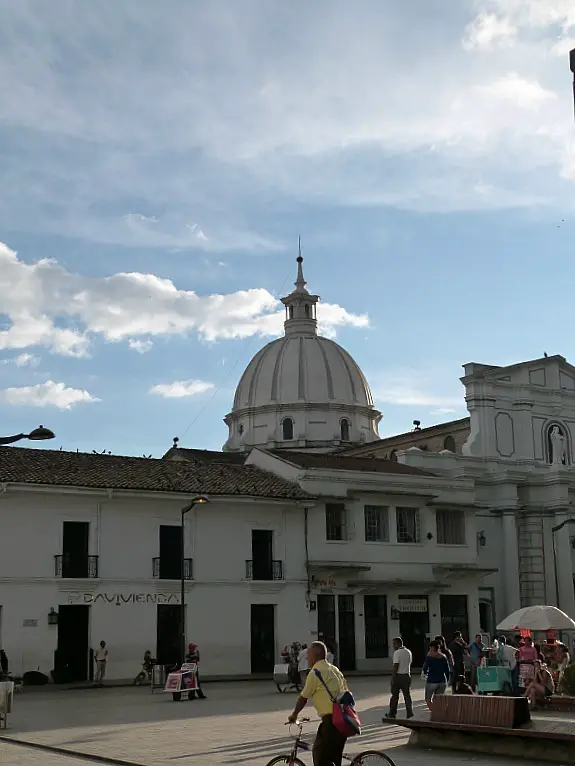
First, we were dropped off at some thermal hot pools in the nearby mountains for a relaxing soak. At the hot pools, the only other people there were a friendly couple from Cali.
We chatted with them in our broken Spanish and they kindly offered to drive us south to Santuario de las Lajas as they were heading that way too. They arranged to pick us up the next morning at our hostel and we would just give them money for petrol.
After our swim, we biked 30km of downhill riding to get back to Popayan. We stopped at a small village for a very cheap Menu del Dia on the way and got a lot of stares as I don’t think they get many gringo tourists up there.
Great day although it would have been nice to soak in the hot springs AFTER the bike riding; oh well.
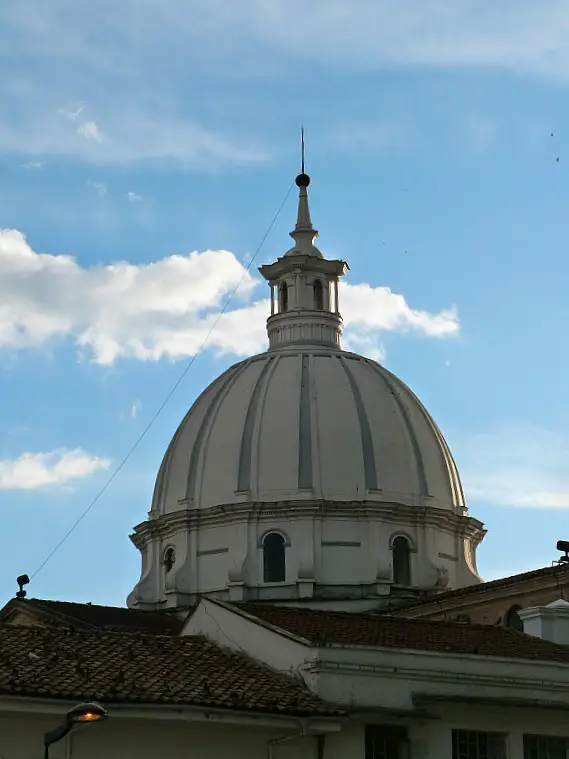
The next morning we found out that the Coffee Farmers were on strike (Paro) and were blocking the roads. Due to a combination of reasons such as bad weather and the falling prices of coffee, a lot of the farmers are on the verge of bankruptcy.
They resorted to drastic measures to make sure the Government couldn’t ignore them, negotiating for an increase in the minimum price for their coffee per bag so they can make a profit or at least break even.
It was a bit frustrating for us as we found out that they had been planning the strike for a while and no one had bothered to warn us about it.
Our newfound Colombian friends arrived to pick us up and the hostel receptionist had to explain the situation. We thanked them for their kindness but obviously no one was going anywhere so we said farewell.
So we enjoyed another day exploring more of Popayan, hoping to leave the following day.
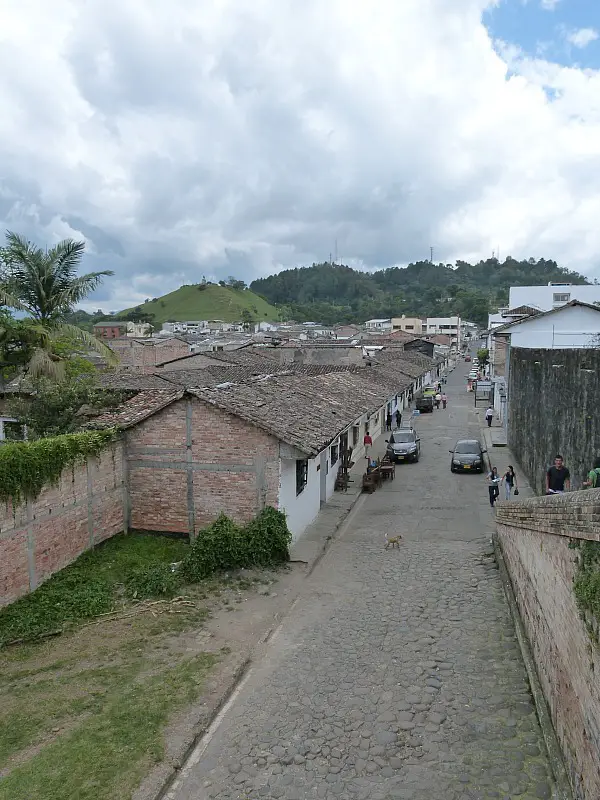
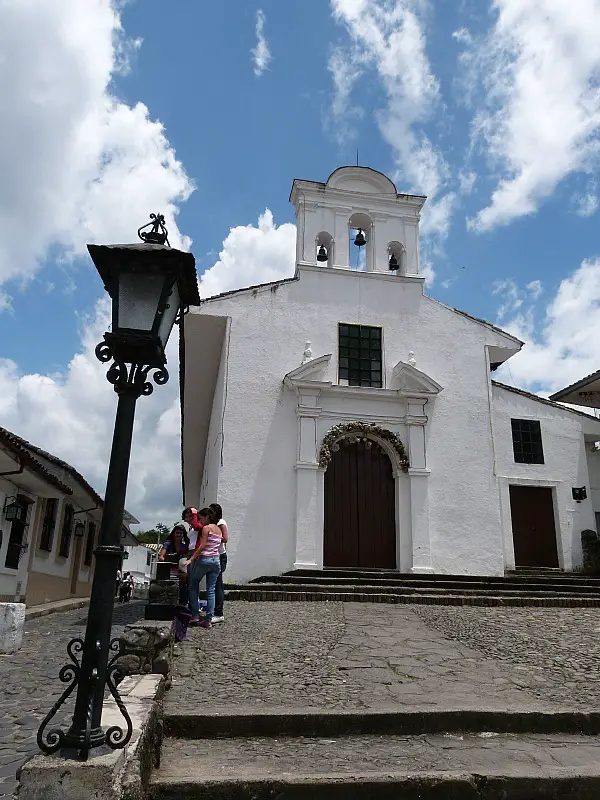
We woke up early the next day and got packed up but the roads were still blocked. Unfortunately this went on, and on, and on. We ended up stuck in Popayan for 5 nights, completely restless and bored at the end when we had originally only planned 2 nights there.

We heard on Friday (Strike Day 5) that negotiations would stop over the weekend. We wanted to get out so bad and ended up being able to get to San Agustin, a small town in the mountains 5 hours away, via small van.
We got within 5km of San Agustin and came across a roadblock. They refused to let us through in the van and told us to walk to town.
I found it quite scary as although some people were calm and reasonable, others were raising their voices, writing horrible things in the dust on the back window of the van and laughing at our misfortune.
I wanted to get out of the negatively charged atmosphere fast and luckily we were able to catch a ride on the back of a ute into town.
San Agustin is a nondescript town set amongst rolling green hills. It is known for the carved stone statues left behind by the Native people who lived in the area between 2000 and 3000 years ago.
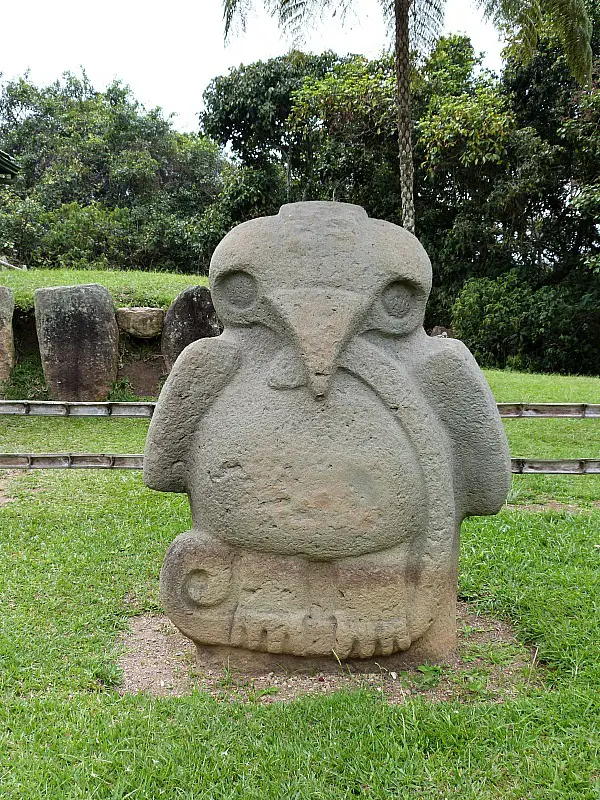
We spent a day wandering around the Archeological Park and another day doing a guided horseriding trek to some of the sites further afield. Our horses were very eager and we trotted and galloped a lot of the way.
One of the Archeological sites was situated above a massive canyon that rivalled the beauty of the Valle de Cocora in Salento. It was a shame that it started pouring down with rain shortly after that and we got soaked riding the horses back to town.

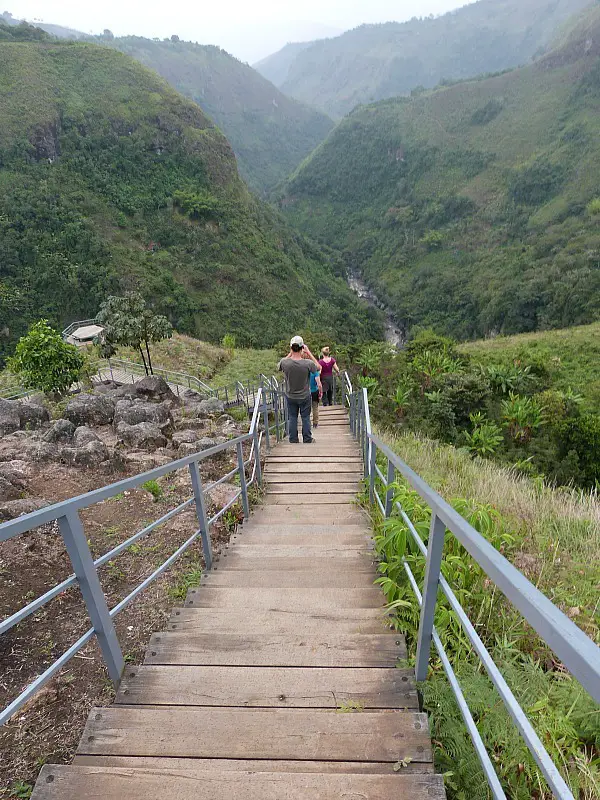
After about 3 or 4 days in San Agustin with the strike still not over, I started to lose hope that we would ever be able to leave, easily anyway.
We got into a routine of checking for any news in the morning, walking into town for lunch at our local and chilling out back at the hostel in the afternoon when it rained.
We heard that if they couldn’t come to an agreement with the Government, the Army might be called in to clear the roadblocks and end the strike with force and we certainly didn’t want to bear witness to that.
Late on our 7th night in San Agustin we finally heard the good news that the strike was over with the Coffee Farmers getting the subsidies from the Government that they wanted. We left the next day and were surprised at how fast they had cleared the roadblocks and got the buses operating again.
If the strike has lasted one more day we were due to be flown out of San Agustin by helicopter to Neiva, to then catch flights out of Colombia.
I am pleased it didn’t come to that because although the helicopter ride would be paid for by the police (woohoo free helicopter tour!), the flights to Quito were very expensive and we would have had to pay for those ourselves.
Now with only 2 ½ weeks left to get down to Cusco to do the Inca Trail, the strike interrupted our travel plans. At least we were able to leave cheaply overland in the end and the Coffee Farmers got the subsidies they so badly needed.
We ended up learning a lot more about coffee than originally planned on our visit to the Café region of Colombia!
If you liked this post, why not check out some more of my Colombia and South America posts:
- Why You Shouldn’t Miss El Valle on Colombia’s Pacific Coast
- Offbeat Places To Add To Your Colombia Itinerary
- Your Galapagos Islands Holiday: Things To Know Before You Go
- 8 Beautiful Galapagos Beaches You Shouldn’t Miss
- Colonial Mountain Towns and Exploring Bogota
- The Beaches and Coastal Mountains on the Caribbean Coast

2 Comments on Exciting Times in Colombia’s Coffee Region